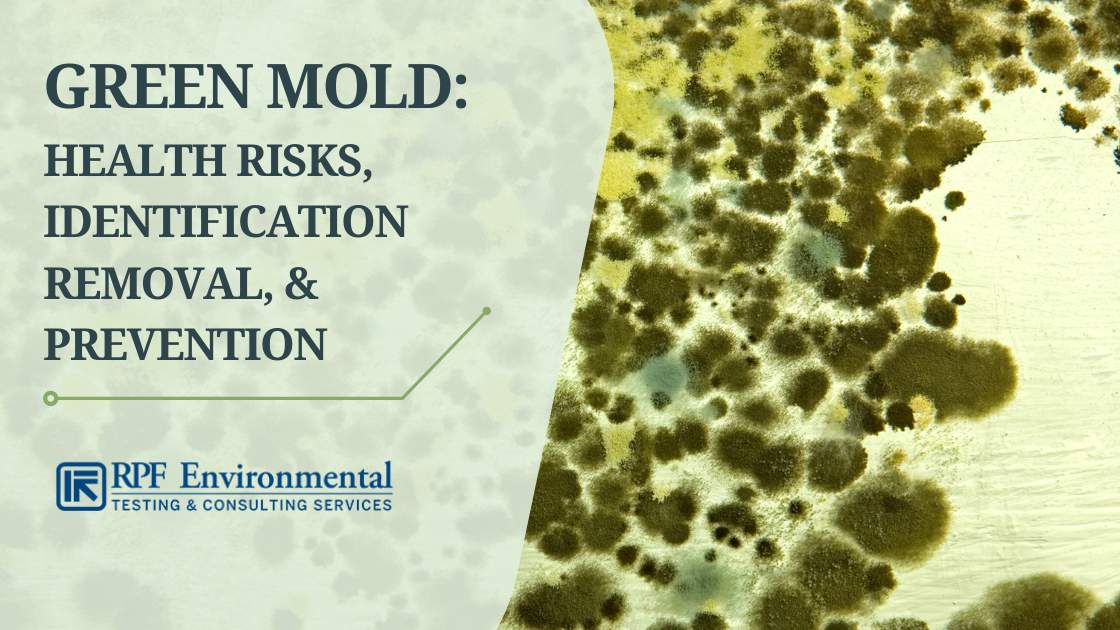If you are concerned about green mold in your business or home, you’ve come to the right place.

We, at RPF Environmental, can help you deal with green mold effectively through our professional mold and indoor air quality inspection services in Maine, Massachusetts, New Hampshire, and areas across the nation.
What is Green Mold?
Green mold refers to any species of fungi with greenish spores in different hues. It appears powdery and soft. There are many types of green mold, but the most common species found in homes are the following:
- Aspergillus (yellow-green)
- Cladosporium (olive-green)
- Penicillium (bluish-green)
Learn more about the house mold types and the common species of green mold in our black mold vs. green mold blog.
Where Can You Usually Find Green Mold in Your Home or Business?
Just like other types of mold, green mold thrives in damp and humid areas with poor ventilation like window sills, basements, bathrooms, attics, and wooden surfaces. However, the spores can spread all over your home and grow on fruits and other types of food that can provide the mold with enough nutrients to thrive.
Moreover, the common green mold species are usually found on the following:
- Aspergillus – powdery and spoiled food (e.g. bread) and moist environments
- Cladosporium – warm or cool areas, plants, fabrics, wood surfaces, and carpets
- Penicillium – surfaces damaged by water and colder areas
Read more about hidden mold and the common places where mold is found in the house.
Is Green Mold Dangerous?
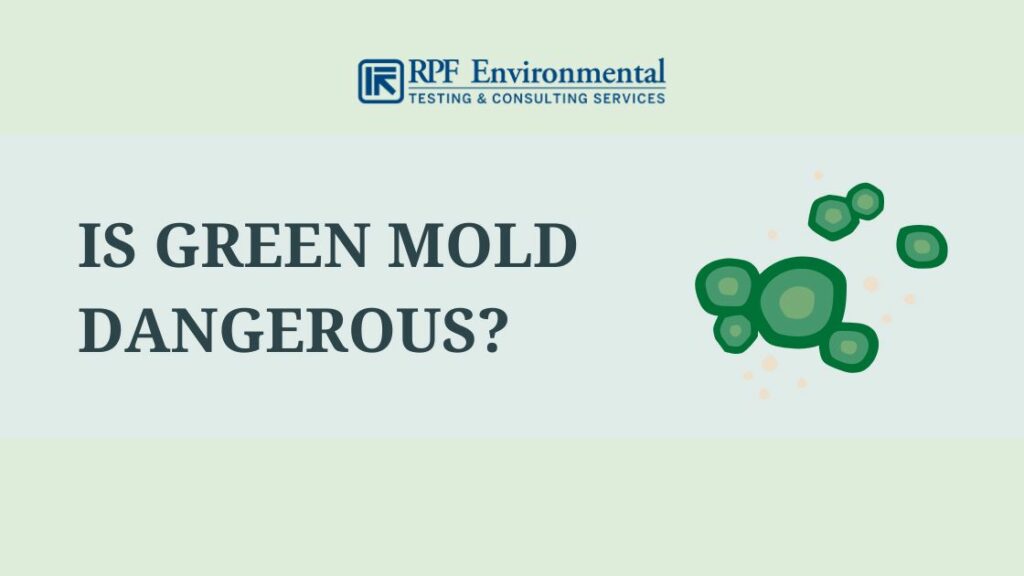
The effects of mold will depend on the species and the exposed person’s health. But all molds, whether green or not, are harmful to both humans and pets. Continuous exposure can cause respiratory complications, especially the toxic species mentioned above.
People who are already suffering from respiratory problems and allergies including those with compromised immune systems are more vulnerable to illnesses caused by green mold. These include cancer patients, the elderly, and children.
Here are the potential effects of green mold exposure according to the species:
Aspergillus
- Toxic strains are allergenic and carcinogenic.
- They can cause respiratory infections such as pneumonia, lung inflammation, and bronchitis.
Cladosporium
- Worsens allergies and asthma.
- Causes eye, ear, and sinus infections including skin problems.
- Prolonged exposure causes sinusitis where fungal debris grows in the person’s sinus cavities.
Penicillium
- Causes lung inflammation and severe sinus infections.
- Produces mycotoxins that can affect kidney or liver function as well as cause cancer and immune deficiency.
Other symptoms of green mold infection include hives, skin rashes, difficulty breathing, swollen throat, watery eyes, runny nose, and coughing.
Thus, it is important that you have the mold removed as soon as possible to prevent the symptoms from worsening if you are experiencing any as well as to protect your family or employees.
How to Identify Green Mold in Your Home or Business
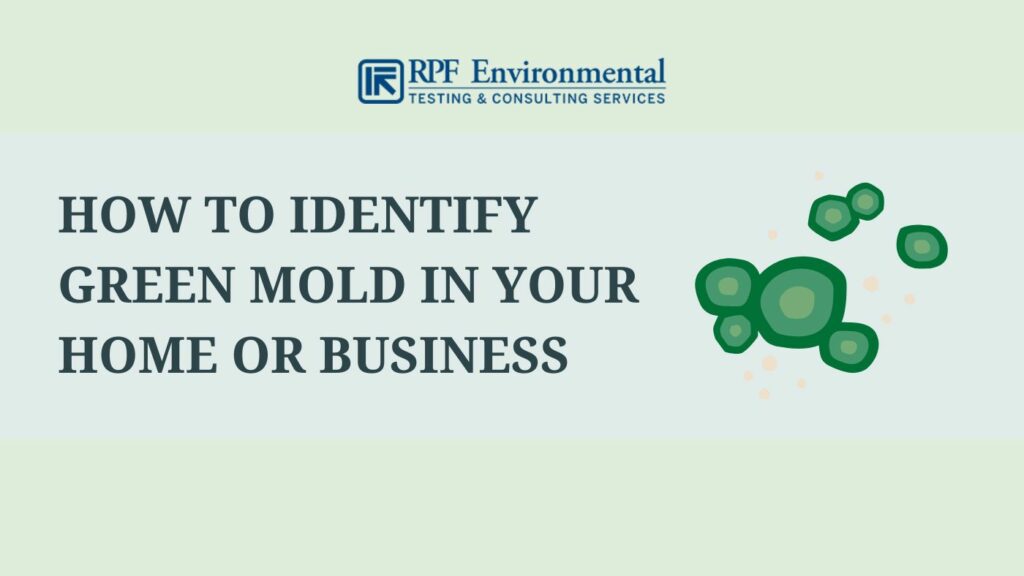
You may think that identifying green mold visually is easy because you can just look for greenish spots that indicate mold infestation. But, recognizing them might be difficult because they can appear in various colors depending on the surface. They range from bright green to green-gray and commonly grow alongside other types of molds (e.g. pink or black).
Moreover, the species we mentioned earlier do not always come in green colors. You can also find them in black or blue colors. Some may even be hidden and hard to find.
This is why a professional mold inspection is important to effectively determine the presence of green mold in your home and to help you take appropriate actions.
You may also want to read our blog about what mold in the house smells like here.
How to Remove Green Mold
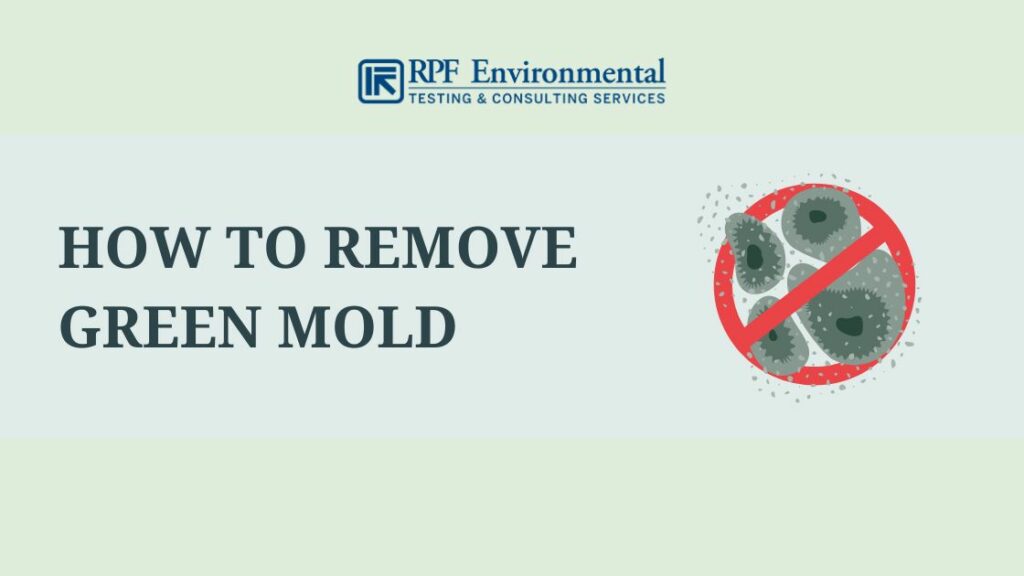
Green mold removal is easy for small colonies of less than 10 sq. ft. You can use DIY home remedies such as baking soda, lemon juice, vinegar, and hydrogen peroxide solutions to clean the infested area. Make sure that you let the surface dry completely after cleaning.
NOTE:
- The mold spores can disperse into the air during cleaning and spread throughout your home. This can cause mold sickness and worsen the problem, so be careful when cleaning and make sure to wear protective gear.
- Leave the removal of large green mold infestations that are larger than 10 sq. ft. to trained and qualified professionals to ensure proper mold removal and remediation.
Read more: DIY Mold Removal: When To Do It & How to Get Rid of Mold Safely in Your Home
How to Prevent Green Mold Growth
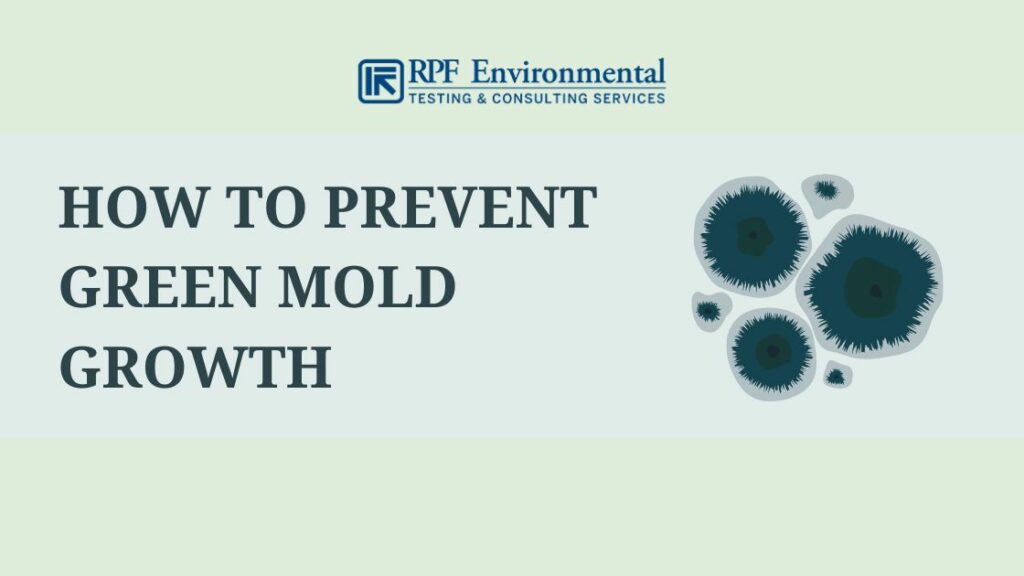
Like other kinds of mold, green mold thrives on water. So, controlling moisture in your home or business are the first steps to mold prevention.
Here are some tips you can follow including those listed by CDC for controlling mold:
- Use a dehumidifier or air conditioner as well as exhaust fans.
- Fix any leaks and consider not using carpets in moist areas like basements or bathrooms.
- Clean your indoor plants and inspect moisture buildup regularly.
- Wipe down condensation areas like window frames, pipes, and tiles.
- Reduce moisture in areas that hold your food like fruit bowls.
Also, if you want to reduce air-borne mold in your home, you can use a HEPA vacuum. HEPA vacuums are effective at removing at least 99.97% of air particles including mold spores.
FAQs
You can use lemon juice, white vinegar, baking soda, and hydrogen peroxide solutions to kill moderate green mold infestations. However, it is always best to consult a professional.
Yes, toxic species of green mold can cause difficulty breathing, watery eyes, swollen throat, coughing, and runny nose. They can even cause severe respiratory problems, cancer, and infections.
Damp and humid areas including surfaces damaged by water (especially wood) in your home can cause green mold infestation. They can even grow on spoiled food and on indoor plants with buildup moisture.
Conclusion
Color doesn’t matter when it comes to mold. So whether it is green or black, it is still dangerous to your health and can even damage your property. You can clean small colonies yourself, but better seek the help of a professional for the removal of larger infestations.
Have your home inspected for green mold infestation with the help of RPF Environmental’s expertise. We offer mold inspection services for homeowners, businesses, government institutions, and other sectors in Maine, New Hampshire, Masshacussets, and other areas throughout the country.

